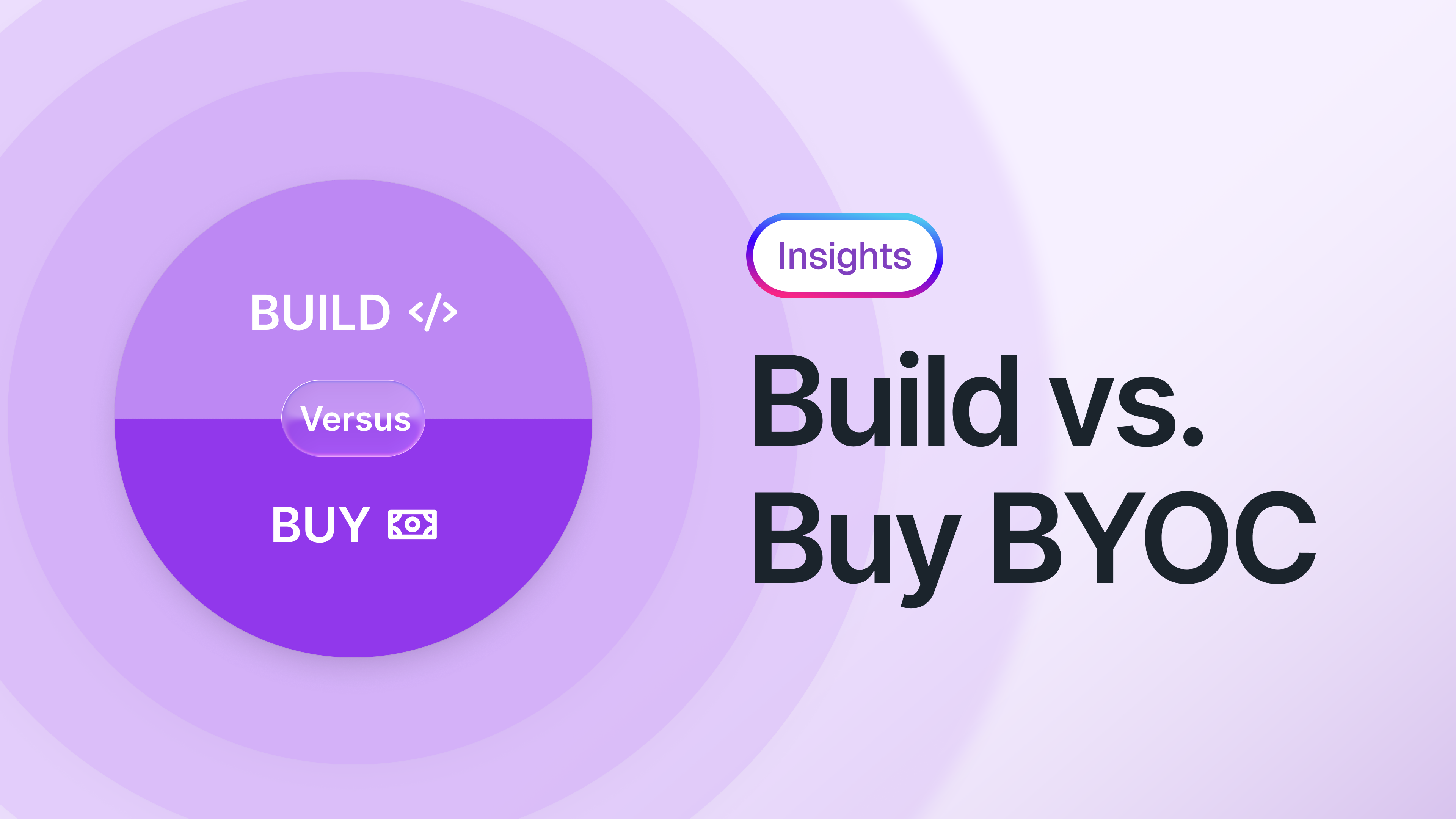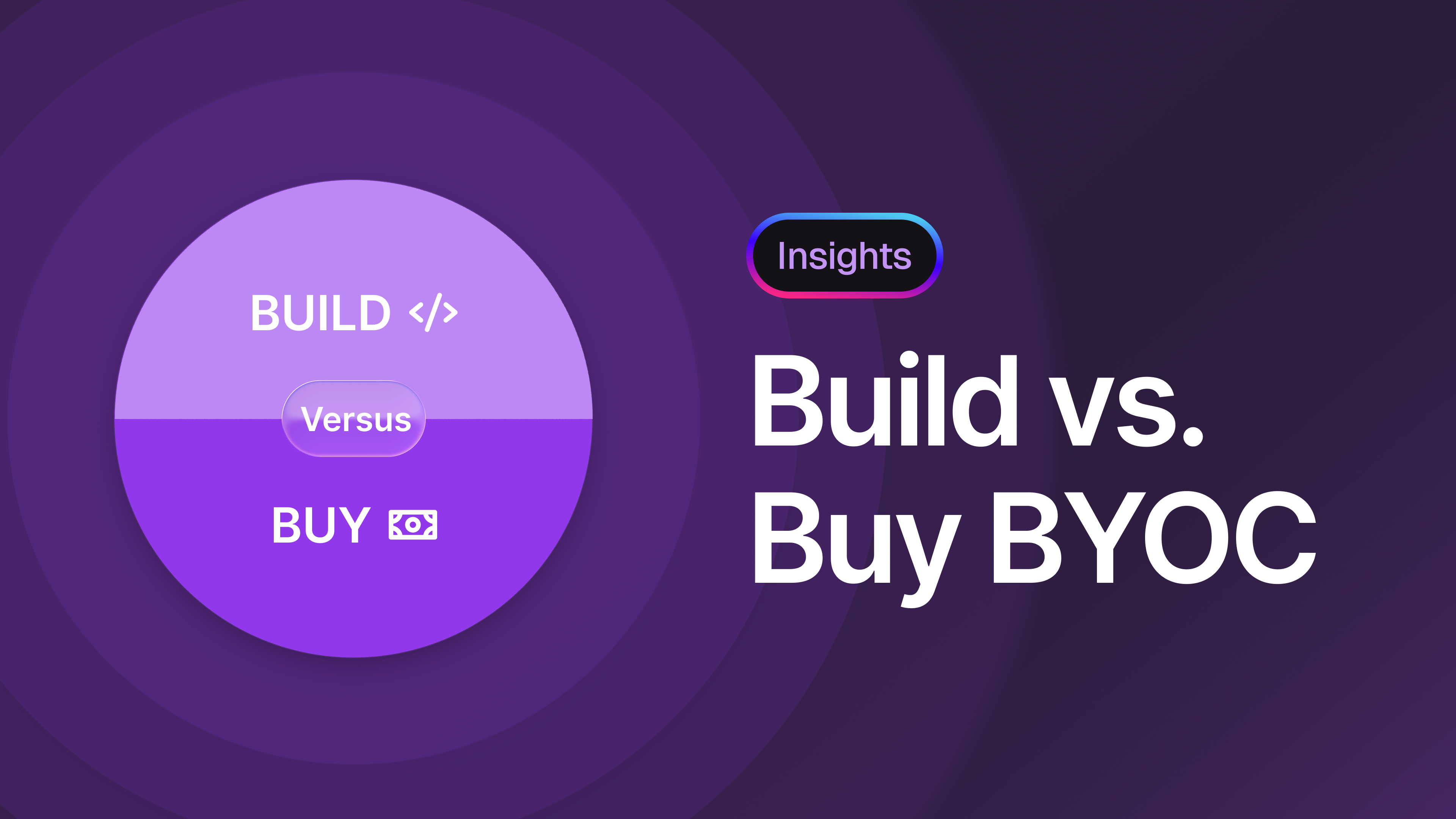Part 1: Build vs. Buy BYOC – The Nuon Advantage in TCO & ROI
Thinking of building your own BYOC? Dive into Part 1 of our series where we break down the true costs of an in-house solution versus Nuon. Discover how Nuon delivers significant TCO savings and an impressive ROI, helping you achieve break-even in months, not years.

Mark Milligan
VP of Revenue


Customers asking software vendors to install and manage their products in their customers’ cloud accounts is not new. If there was enough customer demand, software vendors, thinking they have the engineering chops, would design and maintain an in-house, home-spun Bring Your Own Cloud offering. Nuon hears a different story around the challenges and complexities associated with building BYOC in-house when vendors reach out to explore and invest in Nuon’s off-the-shelf BYOC platform.
What Makes Up An In-house BYOC?
There are several aspects to designing and maintaining a BYOC offering including the vendor’s application, the base infrastructure like Kubernetes or containerization, authentication and authorization, networking including DNS and subnets, policies and permissions, provisioning aka installation, secrets management, Day-2 operations including health checks and secrets rotation, application upgrades, and eventually de-provisioning. Layer on top of that, supporting multiple cloud providers and multiple environments for the vendor and potentially per customer like dev, test, staging and production. What may at first glance looked like an application thing, is in fact a big harry beast of complexity.
Finally, the application must be packaged up with container images and Helm charts for deploying on Kubernetes. For a self-hosted vendor, this most likely is already done but for a SaaS vendor, there is significant labor to produce an installable release including the underlying infrastructure and database setup.
In-house BYOC Costs
Not surprisingly, the biggest component of internally building BYOC is labor, specifically engineering and DevOps skills, to design, build and maintain the deployment option.
Assume 3 Full-time DevOps engineers with fully-burdened salaries of $240,000 each, or $923/hour.
Upfront or One-time costs
The BYOC offering would take 9 months to build, so $498k in labor, and add on $100k in software and infrastructure required, for a total of $598k.
Ongoing or Annual costs
Assume 30% of the 3 DevOps team’s time maintains the BYOC offering so $309k/year with recurring software and infrastructure costs of $100k, so $409k annually.
Nuon BYOC Costs
Nuon requires an annual subscription license, upfront labor costs like building the configuration and some DevOps labor to maintain the Nuon platform and performing installs in customer’s cloud accounts.
Assume the same Full-time DevOps engineer and fully-burdened salary of $240,000, or $923/hour.
Upfront or One-time costs
Implementation Services to build 5 Nuon application configurations, at 5 days per configuration, with 2 DevOps staff at $46k.
One-time Conversion Services to migrate or install 50 customers on an existing in-house BYOC to Nuon, where 1 DevOps staff takes 2 days per customer install, at $92k.
So total Upfront costs of $138k.
Ongoing or Annual costs
Nuon licensing of $200k for the control plane and 50 customer installs. Assume $28k for Maintenance Services to do Customer Installs and change Nuon App Configs and $11k for Nuon Software Release Management Services to keep Nuon current, so $238k annually.
Break-even Months
Lower Nuon annual costs versus in-house results in a break-even in 10 months.
ROI Over Three Years
Over three years, the return on investment of a Nuon versus in-house BYOC is 114% or in other words, for every dollar invested in Nuon, returns $1.14 in cost savings over three years.
Appropriate Use
It's important to remember these examples offer a simplified look at Total Cost of Ownership (TCO) and Return on Investment (ROI), designed to highlight the potential cost differences between in-house solutions and investing in an off-the-shelf platform like Nuon. We strongly encourage all prospects and customers to conduct their own detailed TCO and ROI calculations, as every business has unique operational costs and benefits. The cost assumptions used here—such as DevOps engineer salaries, project durations, and the time estimated for Nuon configurations and installations—are illustrative and should be adjusted to reflect your specific organizational context
Conclusion
The decision to build an in-house Bring Your Own Cloud (BYOC) system might initially seem like an easier and cost-effective choice for many software vendors, leveraging their internal engineering talent. However, as demonstrated, the true cost of an in-house BYOC solution quickly escalates due to significant upfront labor, ongoing maintenance, and the inherent complexities of supporting diverse cloud environments. Nuon offers a compelling alternative, providing a specialized off-the-shelf platform that dramatically reduces both initial investment and recurring operational expenses. By opting for Nuon, companies can achieve a remarkable 114% return on investment over three years and break even in just 10 months, freeing up valuable engineering resources to focus on core product innovation rather than infrastructure complexities. This strategic shift not only delivers substantial cost savings but also positions your company for more agile and efficient customer deployments.
If your company is in need of a BYOC deployment option, please tell us more in the Demo request or sign up for the Trial.